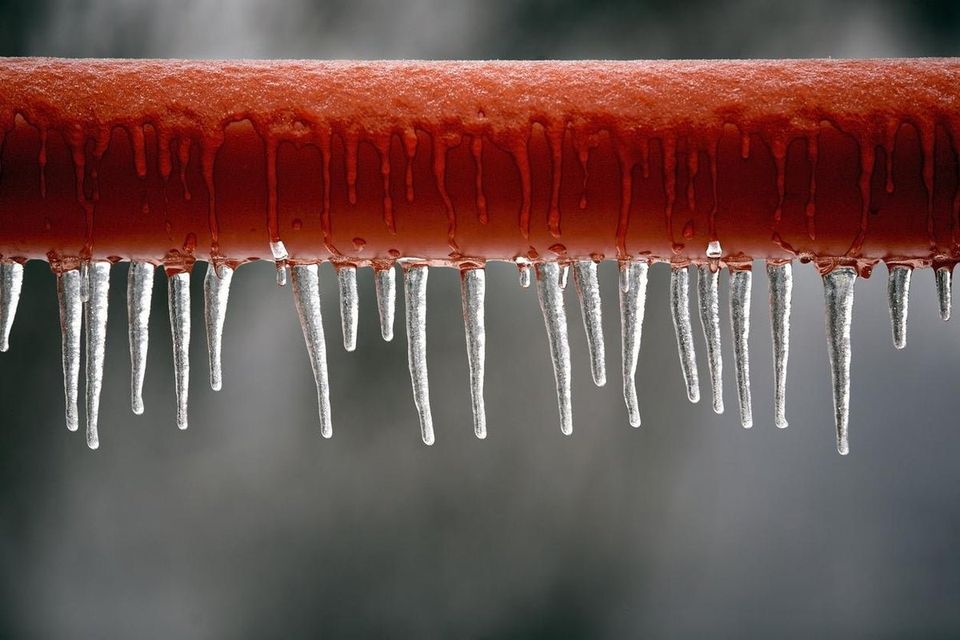Key Approaches for Preventing Frozen Plumbing in Winter
Key Approaches for Preventing Frozen Plumbing in Winter
Blog Article
The article following next in relation to Helpful Tips to Prevent Frozen Pipes this Winter is absolutely stimulating. Don't miss it.

Winter can damage your plumbing, specifically by freezing pipelines. Below's exactly how to avoid it from occurring and what to do if it does.
Introduction
As temperature levels decline, the risk of icy pipelines increases, possibly bring about expensive repairs and water damages. Comprehending just how to avoid icy pipes is crucial for house owners in cold climates.
Recognizing Frozen Pipelines
What causes pipelines to freeze?
Pipelines freeze when subjected to temperature levels below 32 ° F (0 ° C) for prolonged durations. As water inside the pipelines freezes, it expands, taxing the pipeline wall surfaces and possibly triggering them to break.
Dangers and problems
Frozen pipelines can result in water interruptions, home damage, and pricey repair work. Ruptured pipelines can flooding homes and cause comprehensive architectural damages.
Indicators of Frozen Water Lines
Determining icy pipelines early can prevent them from breaking.
Exactly how to identify icy pipes
Try to find decreased water circulation from faucets, uncommon smells or noises from pipelines, and visible frost on exposed pipes.
Prevention Tips
Protecting prone pipes
Cover pipelines in insulation sleeves or make use of warm tape to shield them from freezing temperature levels. Concentrate on pipes in unheated or external areas of the home.
Heating strategies
Maintain interior spaces sufficiently heated up, especially areas with pipes. Open up cupboard doors to allow cozy air to flow around pipes under sinks.
Safeguarding Outdoor Plumbing
Yard hose pipes and exterior taps
Detach and drain garden tubes prior to winter season. Set up frost-proof faucets or cover exterior taps with protected caps.
What to Do If Your Pipes Freeze
Immediate actions to take
If you suspect icy pipelines, keep taps open up to ease pressure as the ice melts. Use a hairdryer or towels soaked in warm water to thaw pipelines slowly.
Long-Term Solutions
Architectural changes
Consider rerouting pipes away from exterior wall surfaces or unheated locations. Add extra insulation to attic rooms, cellars, and crawl spaces.
Upgrading insulation
Purchase high-quality insulation for pipelines, attics, and walls. Proper insulation aids preserve regular temperatures and lowers the danger of frozen pipelines.
Conclusion
Protecting against icy pipelines calls for positive steps and quick reactions. By understanding the reasons, indications, and safety nets, house owners can secure their pipes during cold weather.
5 Ways to Prevent Frozen Pipes
Drain Outdoor Faucets and Disconnect Hoses
First, close the shut-off valve that controls the flow of water in the pipe to your outdoor faucet. Then, head outside to disconnect and drain your hose and open the outdoor faucet to allow the water to completely drain out of the line. Turn off the faucet when done. Finally, head back to the shut-off valve and drain the remaining water inside the pipe into a bucket or container. Additionally, if you have a home irrigation system, you should consider hiring an expert to clear the system of water each year.
Insulate Pipes
One of the best and most cost-effective methods for preventing frozen water pipes is to wrap your pipes with insulation. This is especially important for areas in your home that aren’t exposed to heat, such as an attic. We suggest using foam sleeves, which can typically be found at your local hardware store.
Keep Heat Running at 65
Your pipes are located inside your walls, and the temperature there is much colder than the rest of the house. To prevent your pipes from freezing, The Insurance Information Institute suggests that you keep your home heated to at least 65 degrees, even when traveling. You may want to invest in smart devices that can keep an eye on the temperature in your home while you’re away.
Leave Water Dripping
Moving water — even a small trickle — can prevent ice from forming inside your pipes. When freezing temps are imminent, start a drip of water from all faucets that serve exposed pipes. Leaving a few faucets running will also help relieve pressure inside the pipes and help prevent a rupture if the water inside freezes.
Open Cupboard Doors
Warm your kitchen and bathroom pipes by opening cupboards and vanities. You should also leave your interior doors ajar to help warm air circulate evenly throughout your home.

I'm just very serious about How To Avoid Freezing Pipes and I hope you liked my article. For those who liked our blog entry kindly make sure you remember to pass it around. I cherish your readership.
Call Today Report this page